Enzyme Action (Cambridge (CIE) AS Biology): Revision Note
Exam code: 9700
Mode of enzyme action
Enzymes have an active site where specific substrates bind forming an enzyme-substrate complex
The active site of an enzyme has a specific shape to fit a specific substrate
Extremes of heat or pH can change the shape of the active site, preventing substrate binding
This is called denaturation
Substrates collide with the enzyme's active site and this must happen at the correct orientation and speed in order for a reaction to occur
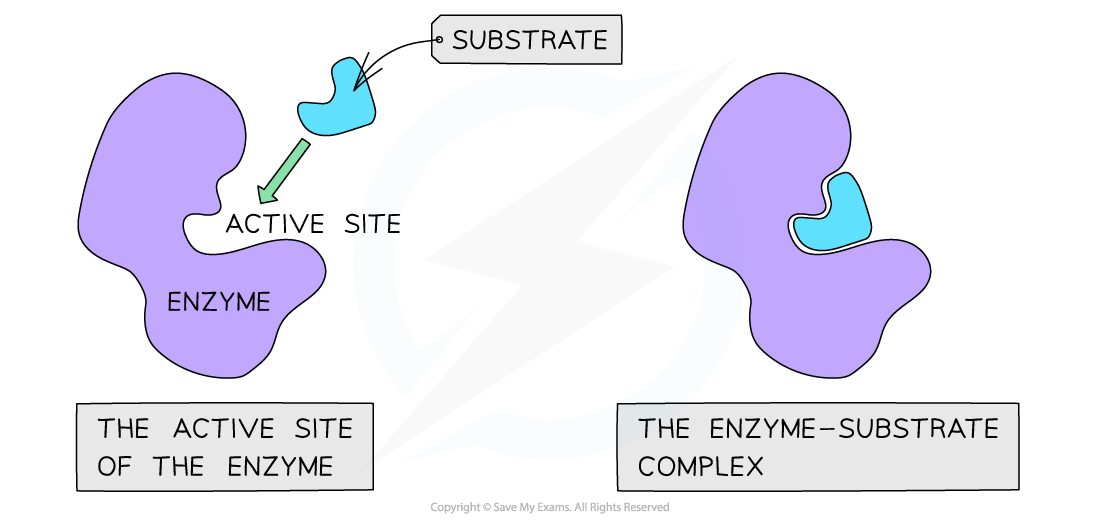
The specificity of an enzyme is a result of the complementary nature between the shape of the active site on the enzyme and its substrate(s)
The shape of the active site (and therefore the specificity of the enzyme) is determined by the complex tertiary structure of the protein that makes up the enzyme:
Proteins are formed from chains of amino acids held together by peptide bonds
The order of amino acids determines the shape of an enzyme
If the order is altered, the resulting three-dimensional shape changes and therefore the enzyme's shape and active site will change
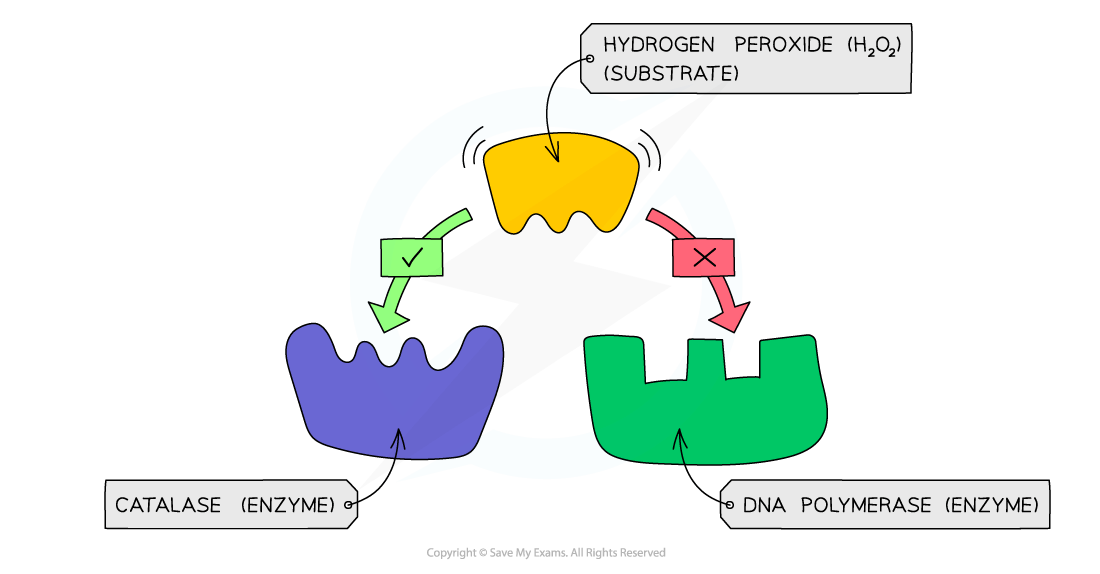
An enzyme-substrate complex forms when an enzyme and its substrate join together
The enzyme-substrate complex is only formed temporarily, before the enzyme catalyses the reaction and the product(s) are released
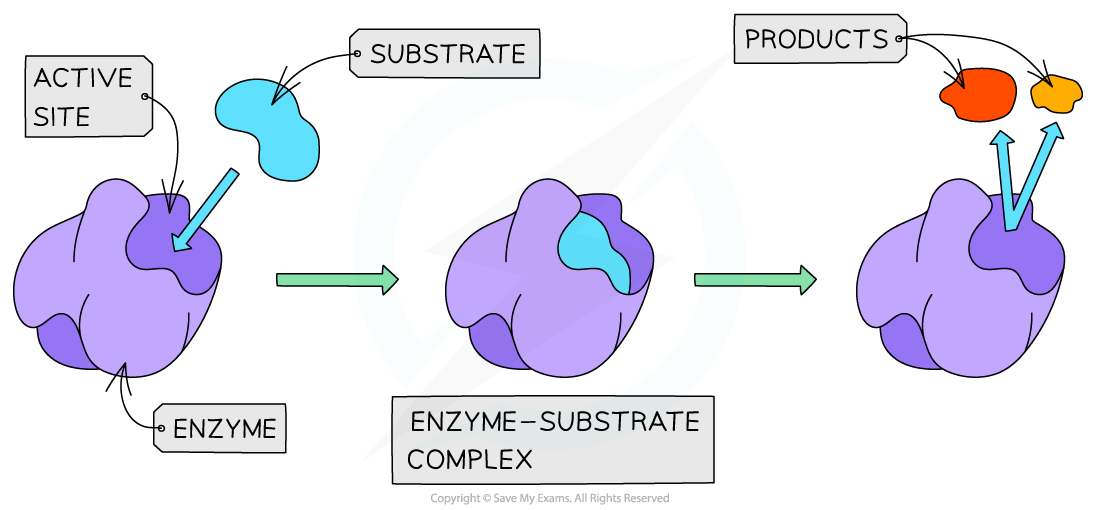
Enzyme reactions can either be catabolic or anabolic
Catabolic reactions involve the breakdown of complex molecules into simpler products
Thishappens when a single substrate is drawn into the active site and broken apart into two or more distinct molecules
Examples of catabolic reactions include cellular respiration and hydrolysis reactions
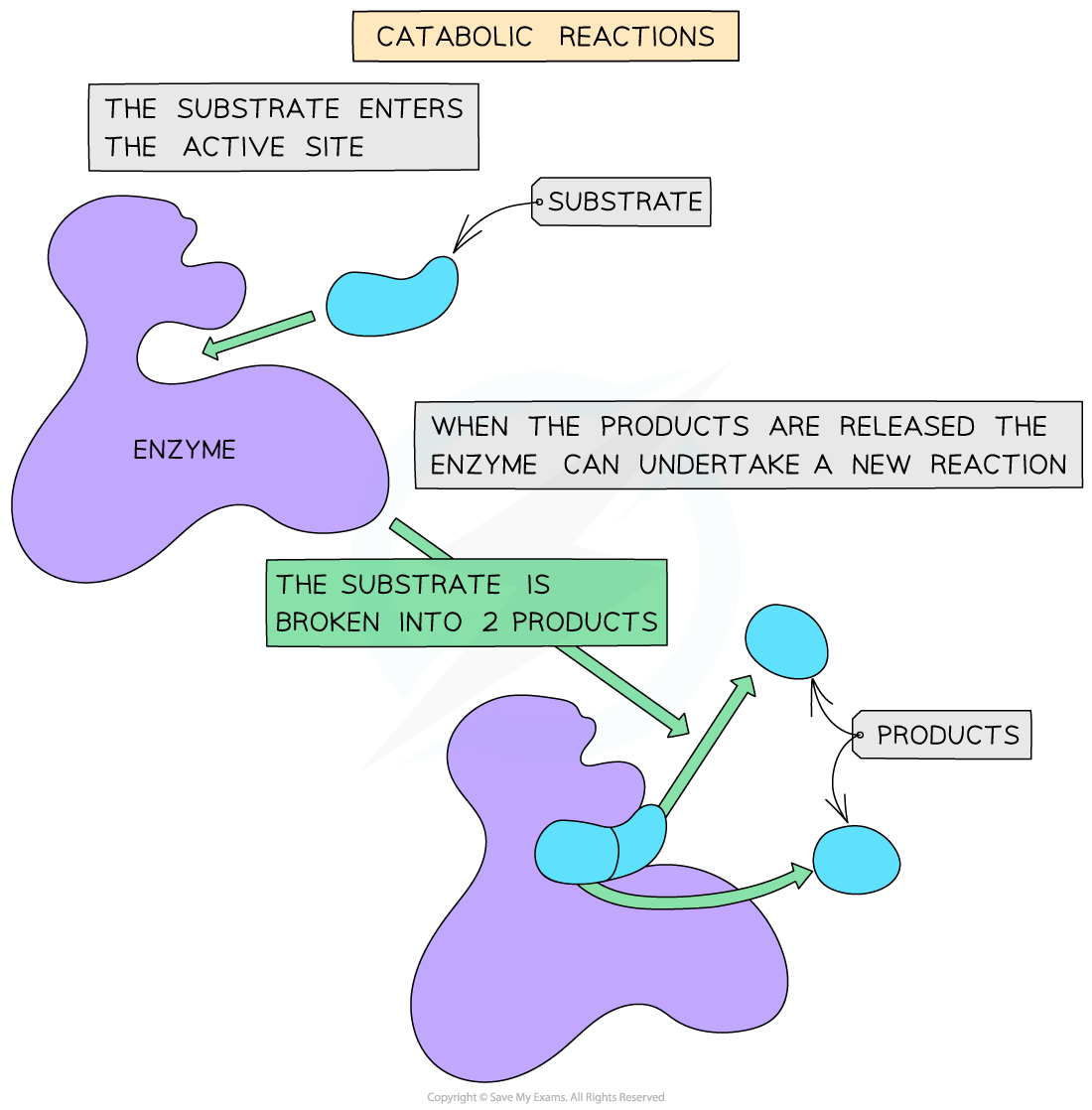
Anabolic reactions involve the building of more complex molecules from simpler ones by:
Drawing two or more substrates into the active site
Forming bonds between them
Releasing a single product
Examples of anabolic reactions include protein synthesis and photosynthesis
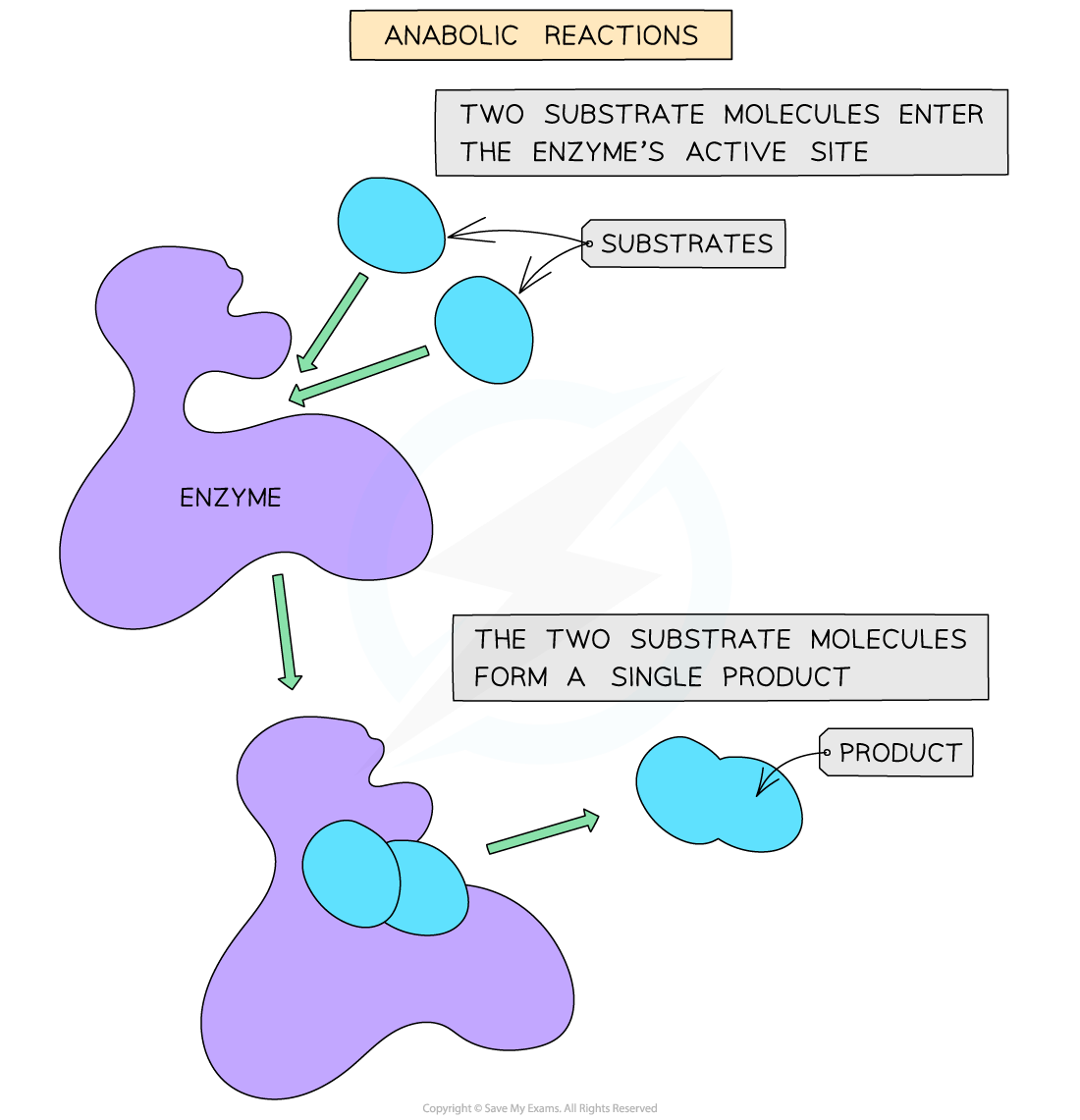
Enzymes work by lowering the activation energy of a reaction
All chemical reactions are associated with energy changes
For a reaction to proceed there must be enough activation energy
Activation energy is the amount of energy needed by the substrate to become just unstable enough for a reaction to occur and for products to be formed
Enzymes speed up chemical reactions because they influence the stability of bonds in the reactants
The destabilisation of bonds in the substrate makes it more reactive
Enzymes work by lowering the activation energy of a reaction and in doing so they provide an alternative energy pathway
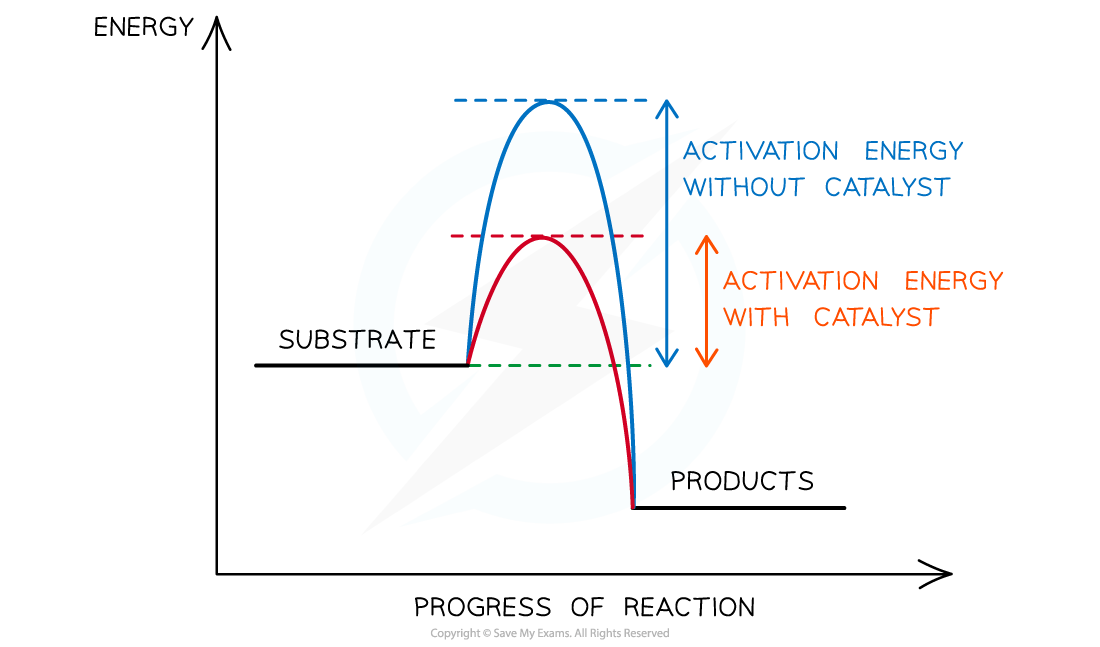
Examiner Tips and Tricks
Don't forget that both enzymes and their substrates are highly specific to each other – this is known as enzyme-substrate specificity.

Unlock more, it's free!
Did this page help you?